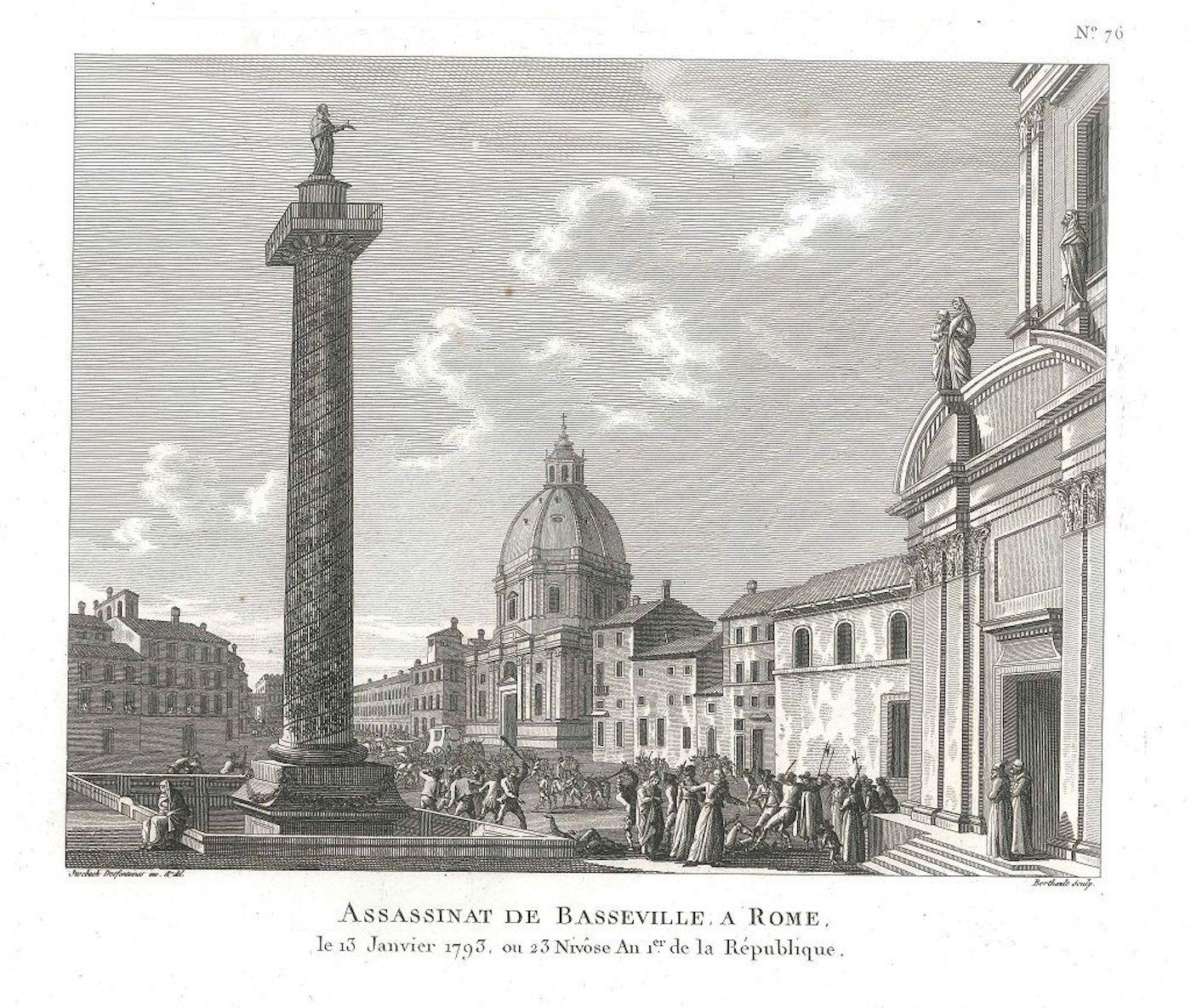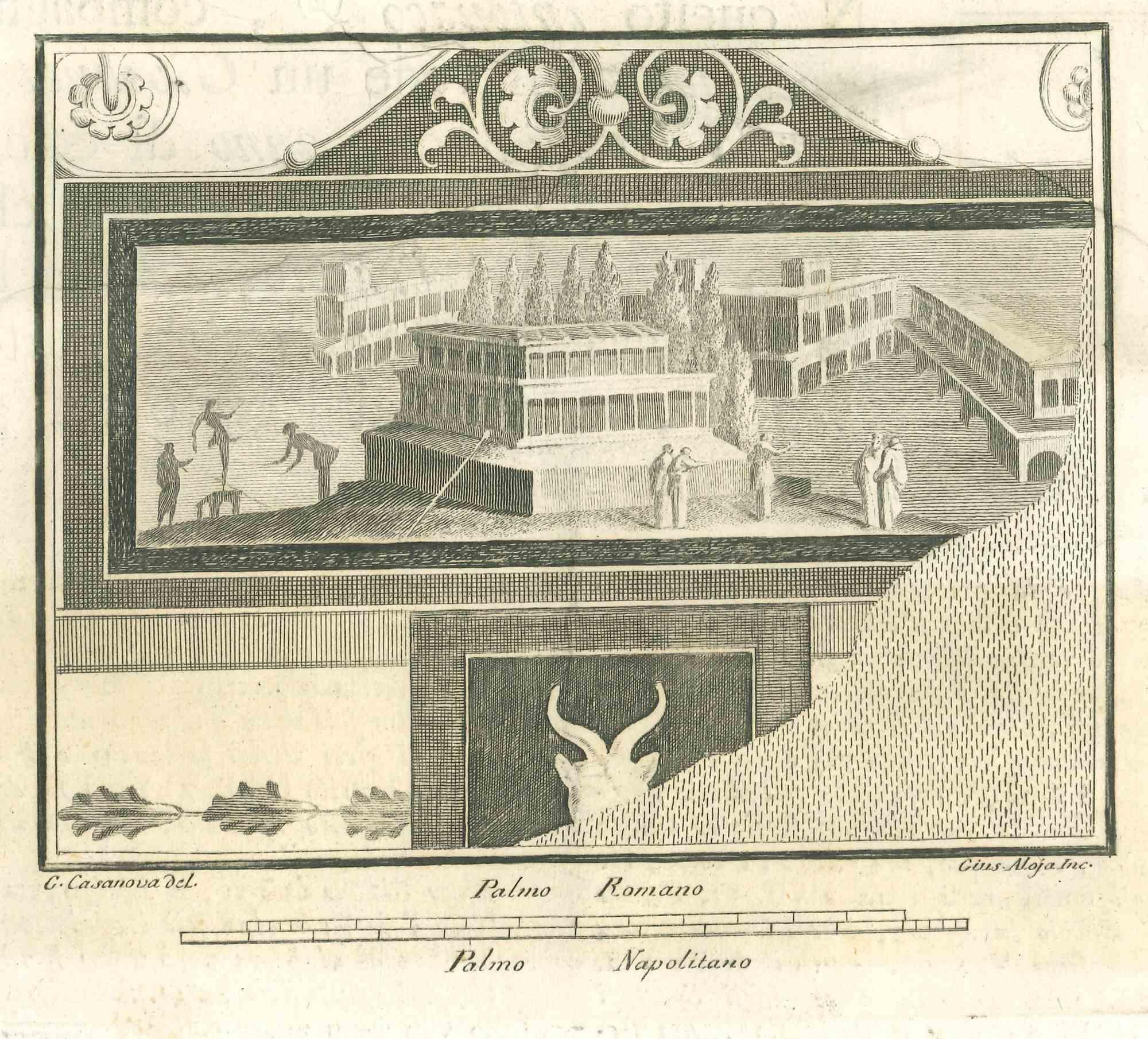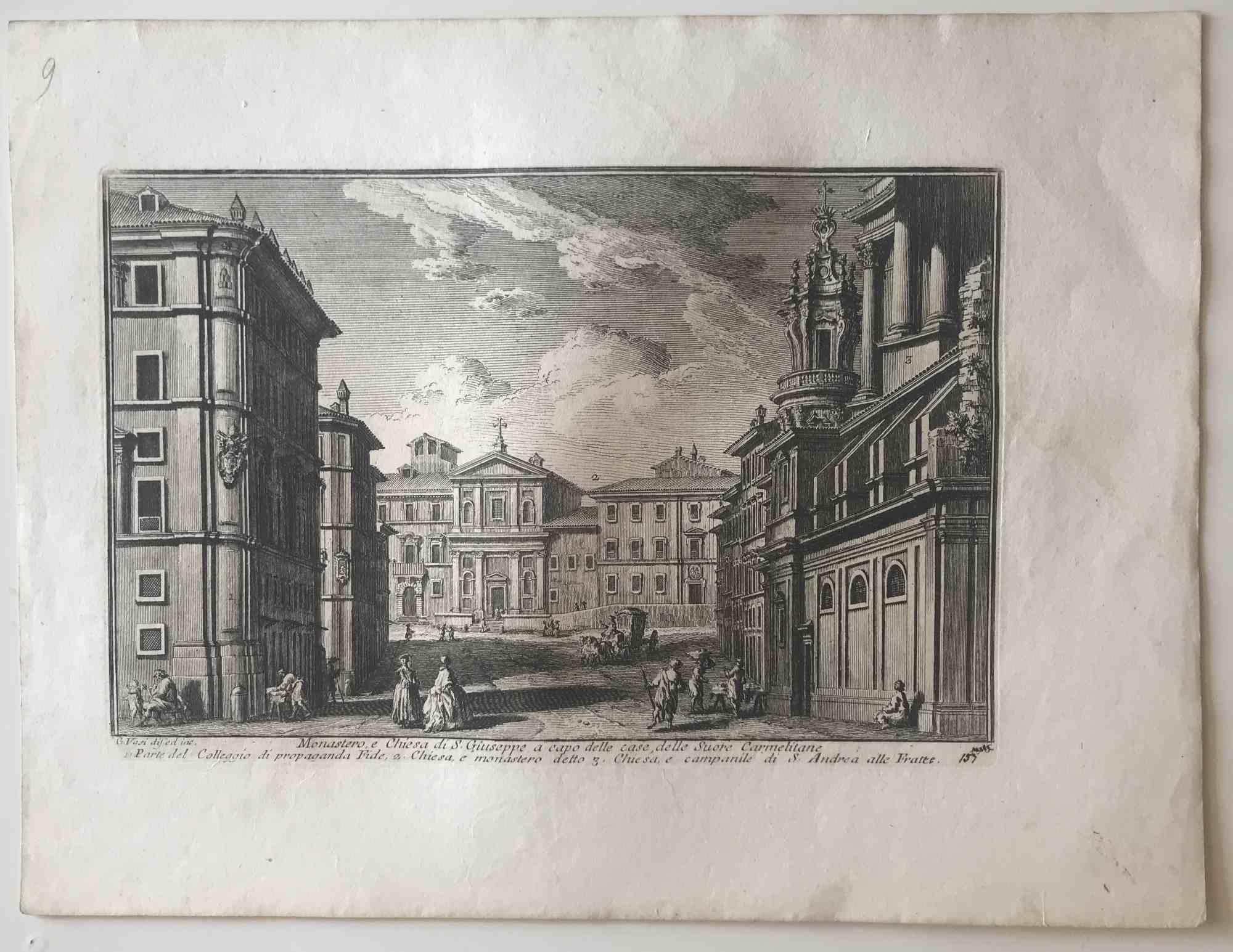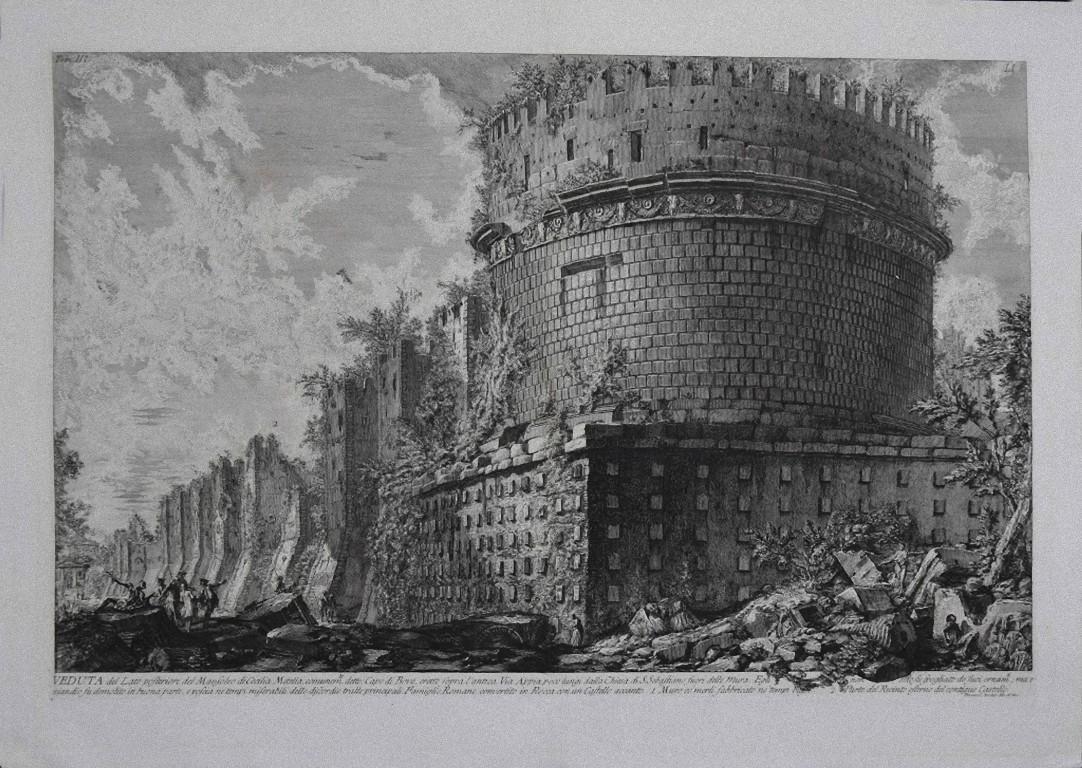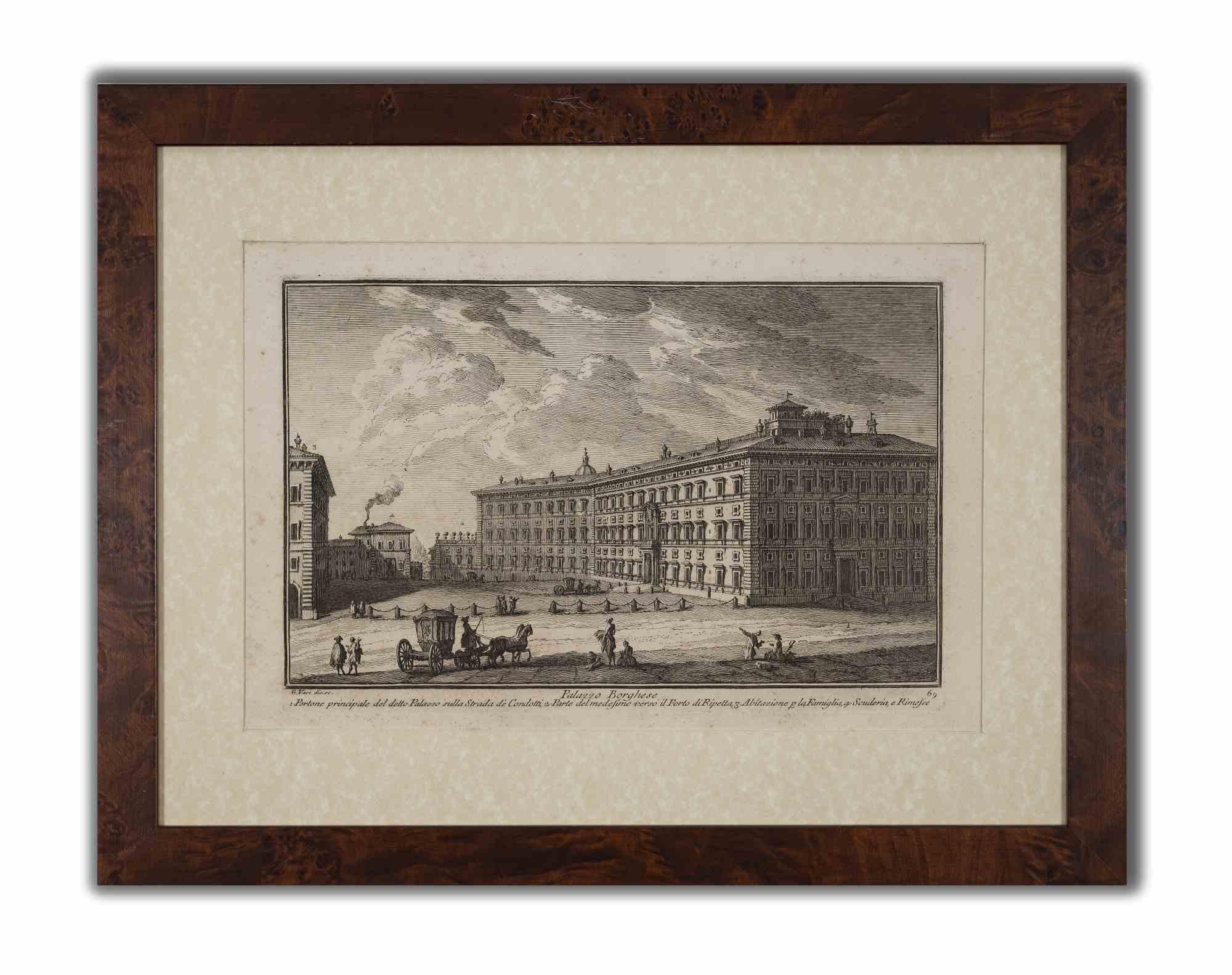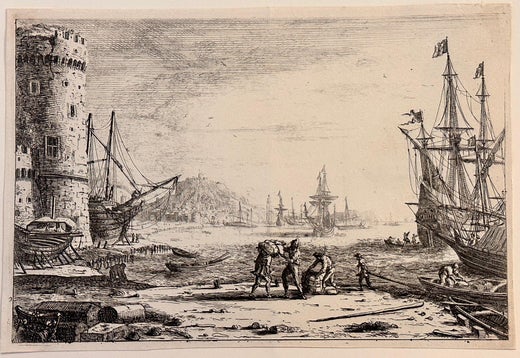Claude Lorrain17th century etching black and white landscape scene forest trees cattle1636
1636
About the Item
- Creator:Claude Lorrain (1604 - 1682, French)
- Creation Year:1636
- Dimensions:Height: 19.375 in (49.22 cm)Width: 21.875 in (55.57 cm)
- Medium:
- Movement & Style:
- Period:1630-1639
- Condition:
- Gallery Location:Milwaukee, WI
- Reference Number:
Claude Lorrain
Claude Lorrain, born Claude Gellée, was a French painter, draughtsman and engraver of the Baroque era. He spent most of his life in Italy and is admired for his achievements in landscape painting. He painted a pastoral world of fields and valleys not distant from castles and towns that entered into these quiet scenes. Landscape as a subject was distinctly nontraditional and secular during this time of religious and mythical iconography, and Gellée was certainly breaking with tradition. John Constable described the artist as the most perfect landscape painter the world ever saw and declared that in Claude’s landscape, “all is lovely, all amiable, all is amenity and repose; the calm sunshine of the heart." He passed away on November 23, 1682.
- ShippingRetrieving quote...Ships From: Milwaukee, WI
- Return PolicyA return for this item may be initiated within 14 days of delivery.
- 17th century etching black and white landscape forest trees satyr goats signedBy Giovanni Benedetto CastiglioneLocated in Milwaukee, WI"Mythological Scene--Satyr & Goat Herder" is an original etching signed by Italian artist Giovanni Benedetto Castiglione. It depicts a satyr lounging on the left and an approaching g...Category
Mid-17th Century Old Masters Landscape Prints
MaterialsEtching
- 17th century etching black and white landscape forest trees figures sceneBy Claude LorrainLocated in Milwaukee, WI"Le Patre et la Bergere (The Herdsman & Shepherdess)" is an etching by Claude Gellee (Le Lorrain). This etching is in the collections of the Metropolitan Museum and the British Museu...Category
Mid-17th Century Old Masters Landscape Prints
MaterialsEtching
- 17th century etching black and white landscape scene forest trees goatsBy Claude LorrainLocated in Milwaukee, WI"Les Chevres (The Goats)" is an original etching by Claude Lorrain. It depicts two pairs of goats and a shepherd watching over them. This etching is also in the collections of the Me...Category
1630s Old Masters Animal Prints
MaterialsEtching
- 17th century etching black and white landscape forest trees river figures sceneBy Claude LorrainLocated in Milwaukee, WI"Le Point de Bois (Rebecca & Eliezer)" is an etching by Claude Gellee (Le Lorrain). This etching is in the collections of the Metropolitan Museum and the Louvre. Publisher: Mannocci ...Category
Mid-17th Century Old Masters Landscape Prints
MaterialsEtching
- 17th century etching black and white landscape forest trees river sceneBy Claude LorrainLocated in Milwaukee, WI"L'Apparition (The Vision)" is an original etching by Claude Lorrain (Claude Gellee). This print depicts a religious vision near the edge of a river. The publisher is Mannocci #5 and...Category
1630s Old Masters Landscape Prints
MaterialsEtching
- 17th century etching black and white landscape forest trees figures sceneBy Claude LorrainLocated in Milwaukee, WI"La Danse Sous Les Arbes (The Country Dance)" is an etching by Claude Gellee (Le Lorrain). This etching is in the collections of the Metropolitan Museum and the Louvre. Publisher: Ma...Category
Mid-17th Century Old Masters Landscape Prints
MaterialsEtching
- Assassinat de Basseville à Rome - Original Etching by P.G. Berthault - 1793By Pierre Gabriel BerthaultLocated in Roma, ITAssassinat De Basseville à Rome is an original black and white etching realized by Pierre Gabriel Berthault, after Jacques François Joseph Swebach-Desfontaines in 1793. Title with caption on plate on the lower center: "Assassinat de Basseville, à Rome/ le 13 Janvier 1793, ou 23 Nivose An Ier de la République". Below the image on the lower margin, "Swebach Desfontaines onv. et del. / Berthault sculp." is etched on plate. This modern artwork is numbered "N. 76", because it is from the series Les Tableaux historiques de la Révolution française. As a matter of fact, Pierre-Gabriel Berthault is well-known for having engraved plates from this collection with the collaboration of the engraver Jean Duplessis-Bertaux. A work - hanging in the balance between news and history - with illustrations of salient or minimal events occurred during the French Revolution. As a celebration of the new ideals of brotherhood, justice, and equality, Les Tableaux immediately became a point of reference for journalism at the time. Of traditional cut, namely showing a view with many human figures, the engraving simplified the lines to be immediately readable for the general public. In our specific case, this original print represents the murder of Hugou de Bassville or Basseville (7 February, 1743 – 13 January, 1793), a French journalist and diplomatist, and protector of the radical Jacobins in Rome. In excellent conditions, except for a usual yellowing of the paper on the edges and a light trace of oxidations on the lower and right margins, beyond the marginal line of the matrix. Pierre-Gabriel Berthault (Saint-Maur-des-Fossés, 1737 - Paris, 1831) was a French master who made engravings from drawings by Jean-Claude Richard de Saint-Non (known as the Abbot of Saint-Non) and from paintings by Louis François Cassas. He depicted many views of Italy and created the collections Voyage à Naples and Voyage pittoresque de la Syrie, de la Palestine et de la basse-Egypte. Before the French Revolution, he was famous for being the author of the Vues intérieures de Paris and for tables with architectural elevations.Category
1790s Old Masters Landscape Prints
MaterialsEtching
- Seascapes With Monument and Figures - Etching by Giuseppe Aloja - 18th CenturyLocated in Roma, ITSeascapes With Monument and Figures is an Etching realized by Giuseppe Aloja (1783-1837). The etching belongs to the print suite “Antiquities of Herculaneum Exposed” (original titl...Category
18th Century Old Masters Figurative Prints
MaterialsEtching
- Monastero e Chiesa di S.Giuseppe - Etching by G. Vasi - 18th centuryBy Giuseppe VasiLocated in Roma, ITMonastero e Chiesa di S.Giuseppe is an original etching of the Late 18th century realized by Giuseppe Vasi. Signed and titled on plate lower margin. Good conditions except for som...Category
Late 18th Century Old Masters Landscape Prints
MaterialsEtching
- View of Mausoleo of Cecilia Metella - Etching by G. B. Piranesi - 1773By Giovanni Battista PiranesiLocated in Roma, ITView of Mausoleo of Cecilia Metella is an original etching realized by the italian artist Giovanni Battista Piranesi in 1773. Precoius roman edition. Complete title on the lower ma...Category
1770s Old Masters Figurative Prints
MaterialsEtching
- Palazzo Borghese - Etching by Giuseppe Vasi - 1747By Giuseppe VasiLocated in Roma, ITPalazzo Borghese is original black and white etching realized by Giuseppe Vasi . Beautiful etching representing Palazzo Borghese in Rome. Signed and...Category
Mid-18th Century Old Masters Figurative Prints
MaterialsEtching
- Interno della Basilica della Fortuna Prenestina - by L. Rossini - 1826By Luigi RossiniLocated in Roma, ITInterno della Basilica della Fortuna Prenestina Image dimensions: 40x53 cm. From the collection “Le antichità de’ contorni di Roma (...)”, published in Rome, 1826 an artist's proof w...Category
1820s Old Masters Figurative Prints
MaterialsEtching
